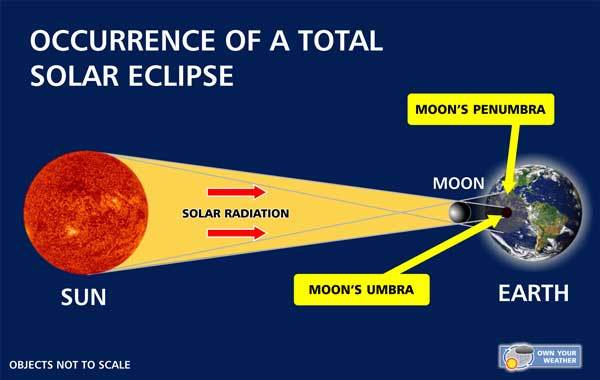image source: https://ownyourweather.com
Welcome to our guide on the frequency of eclipses! Have you ever wondered, “How often does an eclipse occur?” Well, you’re not alone. Eclipses are fascinating celestial events that have captured the attention and curiosity of humans for centuries. In this article, we will delve into the science behind eclipses and explore just how often they occur. So, let’s get started and discover the answer to this intriguing question!
Unlocking the Mystery: How Often Does an Eclipse Occur?
An eclipse is a natural phenomenon that has fascinated humans for centuries. It is a rare occurrence where the sun, moon, and earth align in a way that causes a temporary shadow to be cast on the earth. This shadow is what we commonly refer to as an eclipse.
There are two main types of eclipses: solar and lunar. A solar eclipse occurs when the moon passes between the sun and earth, blocking the sun’s light from reaching the earth. On the other hand, a lunar eclipse occurs when the earth passes between the sun and moon, casting a shadow on the moon.
But how often do these celestial events happen? The answer is not as straightforward as one might think. It depends on several factors, including the type of eclipse and one’s location on earth.
First, let’s look at solar eclipses. These are considered to be the rarest of the two types, occurring only a few times a year. This is because the moon’s orbit around the earth is tilted at an angle, which means the alignment of the sun, moon, and earth is not always perfect. This tilt makes it difficult for the moon to cast its shadow on the earth’s surface.
There are three types of solar eclipses: total, partial, and annular. A total solar eclipse is the most sought-after and rarest type. It occurs when the moon completely blocks the sun’s light, and only the sun’s corona – its outer atmosphere – is visible. A partial solar eclipse happens when the moon only partially covers the sun, and an annular solar eclipse occurs when the moon is at its farthest point from the earth, making it appear smaller than the sun. Depending on one’s location, a total solar eclipse can happen once every 18 months to once every 375 years.
Lunar eclipses, on the other hand, are more common and can occur up to three times a year. Unlike solar eclipses, they can be seen from anywhere on the side of the earth facing the moon. This is because the earth’s shadow is much larger than the moon’s, and the moon’s orbit is tilted in a way that allows it to pass through the earth’s shadow more frequently.
Similar to solar eclipses, there are three types of lunar eclipses: total, partial, and penumbral. A total lunar eclipse is the most spectacular and occurs when the earth’s shadow completely covers the moon. A partial lunar eclipse occurs when the earth’s shadow only partially covers the moon, and a penumbral lunar eclipse happens when the moon passes through the earth’s outer shadow, causing a subtle darkening of the moon’s surface. A total lunar eclipse can happen once or twice a year, while a partial or penumbral lunar eclipse can occur multiple times a year.
The frequency of eclipses also depends on one’s location on earth. Some places, such as the polar regions, may experience more frequent eclipses, while others may go years without witnessing one.
In conclusion, eclipses are rare and fascinating events that occur when the sun, moon, and earth align in a specific way. The frequency of these events depends on several factors, including the type of eclipse and one’s location on earth. Whether it is a total solar eclipse or a partial lunar eclipse, these celestial events continue to captivate us and remind us of the wonders of our universe.In conclusion, the frequency of eclipses is determined by various factors such as the alignment of the Earth, Moon, and Sun. Generally, a solar eclipse occurs once every 18 months, while a lunar eclipse occurs every six months. However, the occurrence of an eclipse can also be affected by geographical location and weather conditions. With that being said, it is a rare and awe-inspiring event that should be cherished whenever it happens. Keep an eye out for future eclipses and make sure to witness the spectacular display of nature’s cosmic dance.
